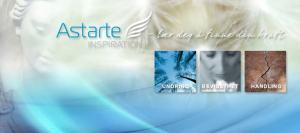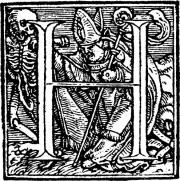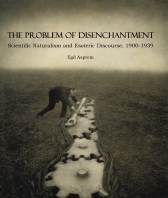 Working as a historian of religion/esotericism/”pseudoscience” one often has to deconstruct misleading and sensational tabloid headlines. They could look a bit like the title of this post. Sensationalistic appeal notwithstanding, this time around I assure that the title is entirely appropriate and accurate for the topic.
Working as a historian of religion/esotericism/”pseudoscience” one often has to deconstruct misleading and sensational tabloid headlines. They could look a bit like the title of this post. Sensationalistic appeal notwithstanding, this time around I assure that the title is entirely appropriate and accurate for the topic.
There are several people that this title could have referred to – one might think of Prince Charles, or perhaps the Dutch Princess Irene, whose abilities to communicate with trees and dolphins bring her closer to the cultic fringe of the environmentalist movement. But as most Norwegian readers may have guessed, it refers to a princess closer to home.
As part of my course on contemporary “alternative” religion in the West, students had to deliver a mid-term assignment. I asked them to do a sociological analysis and historical contextualisation of an organization called Astarte Inspiration. This is an institution offering “spiritual education”, “inspirational talks” and selling various tools for self-realization, “reading” and “healing”. It is headed by two women – Elisabeth Noreng and Princess Märtha Louise of Norway.
The princess attracted intense media focus when she established this institution back in 2007. It’s popularly known as the “angel school”, because one of the secret techniques allegedly taught is how to discover and communicate with angels. In fact, the Princess has claimed to be able to communicate with lots of things, from horses and angels to the spirits of the dead. The latter claim predictably created some extra fury in the media, as concern was growing that the princess now dabbled in spiritualism too.
In short, those wishing to controvercialise Astarte Inspiration have had much juicy raw materials at their disposal. Commercialised spirituality, communication with angels, occult connections – and all this from the daughter of the King, the official leader of the Lutheran state church.
Astarte Inspiration and the sociology of religion
I thought this would be a good and motivating test case for students to try out the sociological typologies and concepts from the literature they’ve been reading this past few months. Those included some standard tools from the sociology of religion, such as the church/sect/denomination/cult typology formalised by Roy Wallis (with roots in Max Weber and Ernst Troeltsch), Troeltsch’s “mystical religion”, Colin Campbell’s influential notion of the “cultic milieu”, and some still useful distinctions from William S. Bainbridge and Rodney Stark’s “rational choice theory of religion” – especially their discussion of different organisational structures, and different models for cult innovation. In addition to that they’ve been through Christopher Partridge on occulture, Paul Heelas and others on “self-religion”, various definitions and concepts of “New Age”, Olav Hammer on discursive strategies (appeals to tradition, science, and various narratives of personal experience), different views on the impact of secularization, and the connections between religion, commodification and market structures impacting on both the production, distribution and consumption of religion today. In short – a rich and varied (not to say bewildering) array of tools for saying something useful about this group. And in addition to all of that, they’ve been drilled in some basic historical overviews of (mostly modern) Western esotericism, and the most recent theoretical perspectives associated with that field.
A lot to take in, one might say. But the output wasn’t bad either.
The essays I received (which had to be behind 2000 and 2500 words) were for the most part variations on a few common, and mostly complementary, themes. The general consensus emerging from my students’ papers is that the Norwegian princess is the leader of a relatively small, world-affirming client cult, associated with a much broader audience cult, that has emerged from the founders’ prior engagement in the cultic milieu and the New Age movement sensu lato – with some roots stretching back to esoteric currents of the 19th century, notably New Thought and the “mind cure”, with hints of spiritualism and Theosophy.
Clarifying the cult
The “cult” concept, as several of the students noted, should not be confused with the media-stereotype of destructive and “brainwashing” authoritarian groups, but rather be seen in terms of Wallis’ two-dimensional theory. It denotes a relatively loosely organised group, characterised by epistemological individualism and a low degree of orthodoxy-policing internally (members may mix and experiment), that sees itself as only one way to the truth among many possible ways (pluralistically legitimate) – but a group which is also considered controversial from the outside, for conflicting with dominant traditions and public assumptions about “authentic” religion. That it is world-affirming (also following Wallis) means that the group’s practice and doctrinal orientation (generally) tend towards embracing worldly values and increasing one’s functions in the world rather than stressing the need for withdrawal from it. All of this implies natural links to other concepts, such as “mystical religion” (focus on individual pursuit and personal experience of “the higher”) and “self-religion” (discovering and developing one’s “true self” is the main focus, rather than, e.g., “worship”, “faith”).
The audience- and client cult aspects say something about the group’s degree of organisation and how it operates. More specifically, couched in terms of Stark and Bainbridge’s version of the rational choice theory (RCT) of religion, it says something about what it offers its members, and what sort of (economic) social relations that emerge. RCT views the contents of “religion” and “magic” – both their practices and their doctrines – as “compensators” for very scarce, and in fact unobtainable, rewards – such as eternal life, a perfect society, or personal superpowers. The theory postulates that different sorts of organisation are built around different sorts of compensators, depending on how specific/general and valuable they are (eternal life in paradise more valuable than a supernormal attraction on the opposite sex). You get the drift: more general/valuable tends towards “religion” – specific/slightly less valuable (but still “supernatural”) = “magic” – with different institutional forms typically coalescing around the different types. (This is not the place to discuss the soundness and usefulness of the distinction).
Briefly put, both audience- and client cults offer weak and specific compensators. Audience cults distribute the goods – which consist mostly of stories, narratives, inspirational literature, maybe some objects – to a mass audience. Lectures, books, television programs etc. can be the medium of audience cults. It provides very weak social ties between members of the audience, and also between the leaders (or “spokespersons”) and their audience. Astarte Inspiration functions this way in much of its broader activity, whether it is through best-selling books such as The Spiritual Password or through “inspirational talks” and lectures.
But in addition to the audience aspect, the core of Astarte Inspiration is organised like a classic client cult. Specific compensators are distributed to a smaller number of individuals based on an economic transaction whereby the “member” becomes a client. In this case, various types of client relations are possible, from purchasing one-time “readings” via Skype, through healing-sessions, and all the way to workshops, courses, and a full-blown three-year teaching program whereby one can learn the techniques and eventually establish one’s own practice.
The origins of an entrepreneurial cult
Some of the students also looked at models for explaining the origin of the group. How can we understand Astarte Inspiration in view of established models for cult formation? Basing themselves on a short but influential discussion by Stark and Bainbridge, the general consensus is that the formation of Astarte can best be understood in view of the “entrepreneur model”. Through prior engagement in the cultic milieu, the leaders borrow elements from existing systems, invent a partially new wrapping, and sell their combination of spiritual products for fees that make it possible for the organisation to support itself as a business. A profit motive is baked into the spiritual production and dissemination – the providers should be able to make a living of this. Whether or not the business is actually profitable is a different matter, of course, and has no bearing on the applicability of the entrepreneurial perspective. One of the students tried to gauge this by checking the organisation’s publicly available accounts: the registered turnover in 2012 was a mere two million NOK (roughly 250,000 EUR / 340,000 USD), so Astarte is apparently not big business.
Psychopathology?
More controversially still, a few of my students also explored the possibility that Astarte Inspiration can be understood in terms of a “psychopathology model” – that is, as a positive social expression of ideas and practices that originate in individual psychopathology on the part of the founders. The Princess’ claims of paranormal-type experiences (communicating with animals, angels, telepathic contact with other people) from childhood could, some argued, afford a reading along these lines.
I had to criticize these views – not, as some readers might perhaps instinctively think, because of any stigmatizing effect that could possibly arise from this proposition (as far as I am concerned such concerns matter very little to how we ought to classify and explain events) – but rather because we have very little evidence to suggest that any pathological factors have been essential in forming this group. All we have are some rather vague biographical statements about extraordinary experiences – but these can just as easily be interpreted as part of framing charismatic authority (in the sense of Weber, and Hammer’s analysis of the legitimizing function of first-person experiential narratives), while playing on common discursive assumptions in the cultic milieu about the possibility of paranormal “contact” – whether through channelling, telepathy, communion with angels, spiritualism, or the reading of “auras” and “energy fields”. We don’t really need strong psychological factors to explain this – even though we cannot, of course, rule out the possibility of specific psychological and personality factors have played a role in the trajectory of the two leaders.
The assignment seems to have worked well. Lots of good short essays, and I got some entertaining material to read.
For those who are interested in knowing more about the course and the literature that has been vaguely referred to above, please feel free to have a look at the teaching documents publicised at my Academia.edu page.









If this is an (advanced) undergraduate course, then you are giving them a healthy spectrum of theoretical perspectives!
People are expected to have at least one year’s studies behind them, and preferably all the basic religious studies. It’s a good and challenging spectrum, and even if it will be difficult to truly master *everything*, the acquaintance with a broad range and having to work actively with a more narrow range – and engaging with empirical material – should give a good basis for continuing to an MA. At least that’s what we hope. 🙂
Reblogged this on Wolf and Raven.